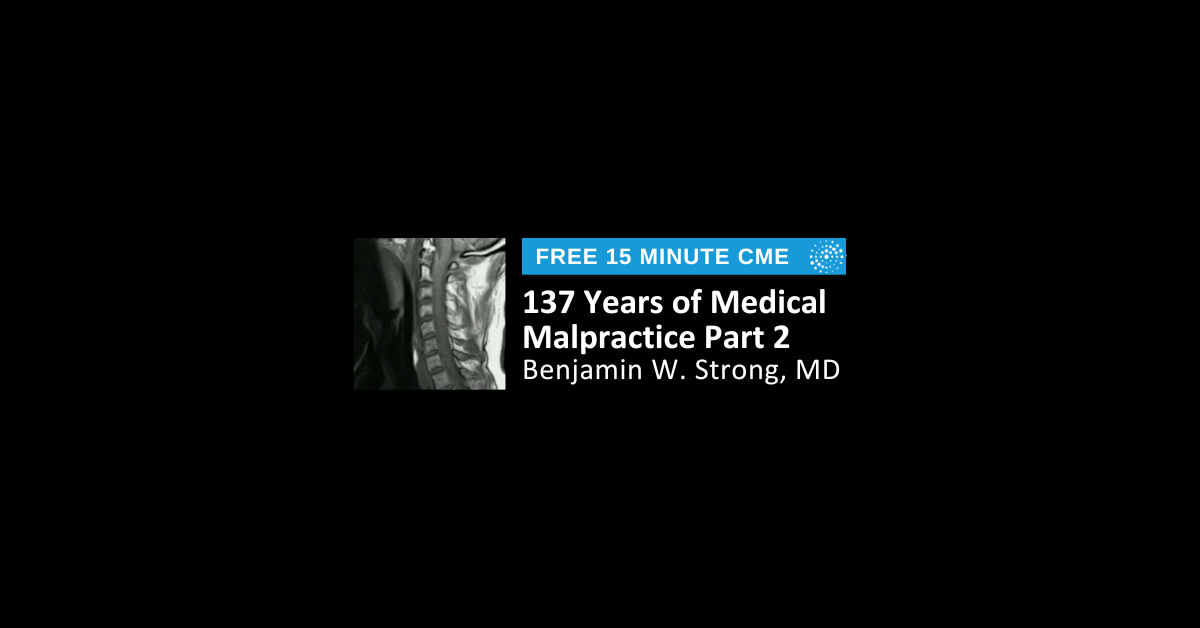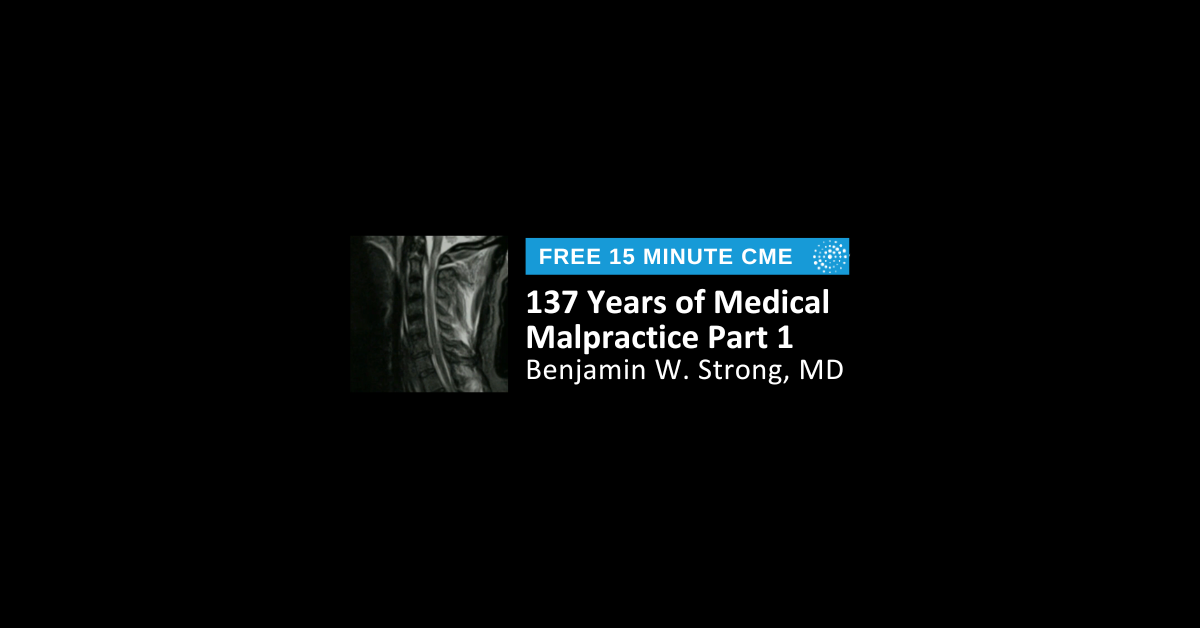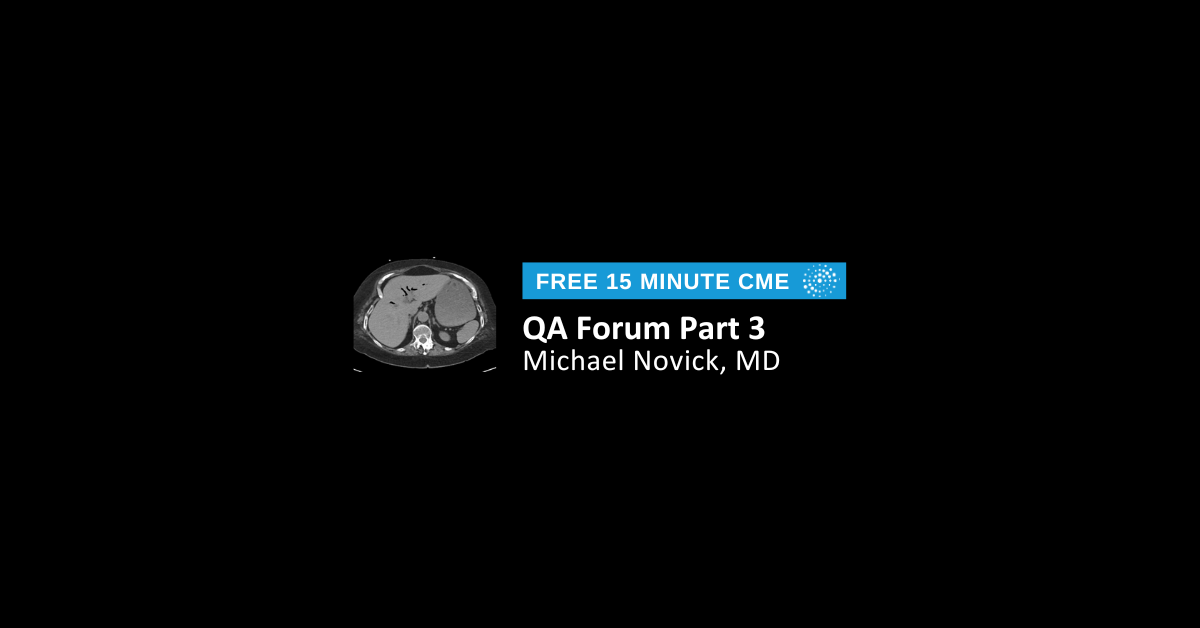
137 Years of Medical Malpractice Part 7 of 9
0.25 AMA PRA Category 1 Credit™
Cost: Free
Expires: 12/31/2026
Course Overview
Subdural abscess, stroke, pneumothorax, and thromboembolism are covered in this 15-minute CME course. This is the seventh of a 9-part series with a detailed review of 45 medical malpractice cases. Cases are categorized according to error and case type giving an overview of the events typically contributory to medical malpractice lawsuits. Diagnostic error cases include annotated cine images as well as event timelines, report evaluations, and depositions excerpts.
Learning Objectives
- Understand the importance of aortic, epidural, and superior mesenteric artery evaluations in reducing the risk of medical malpractice lawsuits.
- Appreciate the nonclinical issues that can contribute to medical malpractice lawsuit risk.
- Recognize the lack of correlation between career QA performance and the risk of a medical malpractice lawsuit.










.jpg?width=1024&height=576&name=vRad-High-Quality-Patient-Care-1024x576%20(1).jpg)







%20(2).jpg?width=1008&height=755&name=Copy%20of%20Mega%20Nav%20Images%202025%20(1008%20x%20755%20px)%20(2).jpg)





















